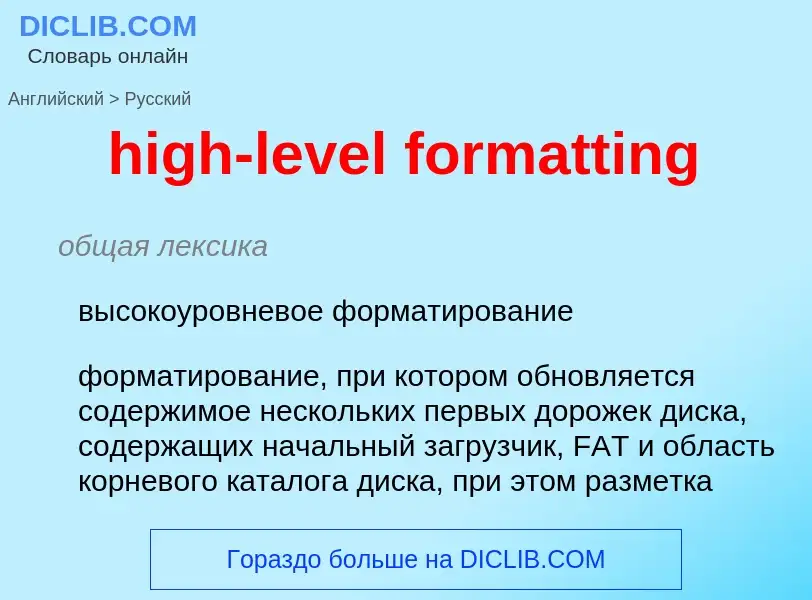Перевод и анализ слов искусственным интеллектом ChatGPT
На этой странице Вы можете получить подробный анализ слова или словосочетания, произведенный с помощью лучшей на сегодняшний день технологии искусственного интеллекта:
- как употребляется слово
- частота употребления
- используется оно чаще в устной или письменной речи
- варианты перевода слова
- примеры употребления (несколько фраз с переводом)
- этимология
high-level formatting - перевод на Английский
общая лексика
высокоуровневое форматирование
форматирование, при котором обновляется содержимое нескольких первых дорожек диска, содержащих начальный загрузчик, FAT и область корневого каталога диска, при этом разметка дорожек на сектора не производится
синоним
Смотрите также
Смотрите также
общая лексика
переформатировать
заново отформатировать магнитный носитель, возможно, разрушив хранящиеся на нём данные
изменить формат файла или документа
Смотрите также
Определение
Википедия
Disk formatting is the process of preparing a data storage device such as a hard disk drive, solid-state drive, floppy disk, memory card or USB flash drive for initial use. In some cases, the formatting operation may also create one or more new file systems. The first part of the formatting process that performs basic medium preparation is often referred to as "low-level formatting". Partitioning is the common term for the second part of the process, dividing the device into several sub-devices and, in some cases, writing information to the device allowing an operating system to be booted from it. The third part of the process, usually termed "high-level formatting" most often refers to the process of generating a new file system. In some operating systems all or parts of these three processes can be combined or repeated at different levels and the term "format" is understood to mean an operation in which a new disk medium is fully prepared to store files. Some formatting utilities allow distinguishing between a quick format, which does not erase all existing data and a long option that does erase all existing data.
As a general rule, formatting a disk by default leaves most if not all existing data on the disk medium; some or most of which might be recoverable with privileged or special tools. Special tools can remove user data by a single overwrite of all files and free space.

![IBM PC XT]] hard drive IBM PC XT]] hard drive](https://commons.wikimedia.org/wiki/Special:FilePath/IBM PC XT 10 meg MFM low level format.jpg?width=200)
